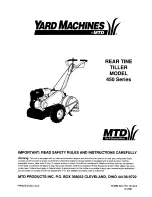
11
23.0 Optional Free-Cool Modules
Modules for free cooling can connect directly to mechanical or pump modules to utilize the outside air temperature for cooling the water temperature.
Anytime a free-cool module is used a minimum of 25% glycol concentration should be used. The water / glycol in these modules use the fin tube coils for
heat exchange. Free-cool modules can work as stand alone or connect via a three-pipe header system to mechanical modules to supplement the cooling. A
three-way diverting valve which opens and closes based on ambient temperature will either send water through the free cool module or divert water directly
to the mechanical modules. The middle header of the free-cool module should be the inlet connection from the building load. Once water leaves the free-
cool or if the valve to the free-cool is closed, the water goes to the top header. The top header of the free-cool connects to the first mechanical module so
water will then flow to the mechanical modules. Water leaves the mechanical module through the bottom header so the mechanical module bottom header
will connect with the free-cool module bottom header. Leaving chilled water can the either exit the chiller through the free-cool module bottom header or
that header can be capped and water exits out the opposite ends mechanical modules bottom header.
Free-cool module(s) do not communicate directly with mechanical modules. They can be supplied with either fan cycling controls or VFDs that utilize a Carel
controller for fan speed control. Please see Free Cool User Manual for more information
24.0 Optional Glycol Feeder Module
The Airstack Glycol Feeder Module is one section of a multi-module chiller system. Its purpose is to supply makeup glycol solution to the chilled water loop at
the suction side of the pump. Each glycol feeder module is composed of a storage tank and pump assembly, expansion tank, and related control components.
NOTE
: Do not use the glycol feeder to fill the chilled water loop. The pump inside the glycol feeder is designed to move low volumes of solution at high
pressures, not high volumes of glycol solution. Doing so could burn out the pump motor.
NOTE
: Before supplying power to the pump, make sure the ball valve to the system is closed.


































